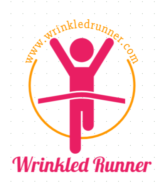
Using a Running Journal
Once I decided to run a marathon, I started this blog to keep track of my training. That quickly got boring, and it has evolved into me posting more about what I am learning as a runner and passing it on to you.
Recently, I read the book Mindful Running and the author suggests runners should track their runs (besides just using a workout app).
I like to include things like what I wore that run, if I didn’t have a good run what I ate or did that day that may have contributed to it, etc.
I’m going to show you two different ways to accomplish this…one is from a paper journal and one is digital. Both are designed by myself since I can never seem to find the perfect fit.
I am using Evernote for my digital journal because it is easy to include pictures.
You can download Evernote from the App Store, or you can use whatever note-taking app/program you like.
For me, the point of a digital log is to make the journal more visual…adding a pic of the route I took and a screenshot of the information like pace, etc.
I have Evernote on my iPad, which is hooked up to the “cloud”. This way, when I take a screenshot of my workout information in my iPhone, it ends up in the Photos section of my iPad.
Then when I go into my Notebooks in the Evernote App, I can go to my Training Journal and add a note.
Using the camera icon in the bottom left of the note, choose the “Add from Photos” option.

You can then choose the picture of your workout stats and add it to the note. If you are on an Apple product, use the “Recently Added” tab to make finding the pic quick.
I then add a shot of the route I took. In the “note” itself (see picture above), the stats are on top of the route. On the left hand side is a list of all the notes within the notebook, and you can see both the route and the stats.
Within the note, I jot down the weather and what I wore and how that felt (whether I should lose a layer or add one at that temp).
I also talk about whether the run was hard or felt good…what I did (if anything) to adjust (backed off a bit, sped up, etc.) and even along the route I take note of things that may be helpful later.
For example, here is one entry:
“32 degrees- black half zip, vest, winter jacket, full hat (I have a band that just goes around my ears, hence the specification), Manzella gloves, pink/black tights- good choices (cold at first but warmed up quickly)
Cold. Felt hard in some spots, so backed off a bit until pushing again. Got to General Mills factory a little after 2:30 and lots of cars were leaving- annoying.
Sheets of ice at the boats on canal side. Listened to the Running for Real podcast with Marathon Investigation”
Looking back on that entry tells me to avoid the General Mills area around 2:30 on a week day afternoon, tells me what a good outfit is for a particular temp and that days that have a snowfall or are cold after a snowfall the area around Canalside will probably be icy.
I will tweak entries and the information I put in the journal as time goes on.
If you don’t want to do your own, there are apps (both free and paid) that are available.
If you want to have a paper journal, you can design your own or check out Etsy…there are several over there that are already designed. Online stores (like Amazon) also have paper journals available.
I designed one quick to show what you could set up in your computer and then just print pages as you needed them. I use Pages on my Mac, but any program with the capability to insert a table will work.

The one thing I like about saving pictures over the paper one is I can include the actual route and I can see my splits. If you run long, fitting in the splits on one line could get messy and hard to read.
The nice thing about tech these days is the information is there to look back on and record even a month later if you slack once in awhile (or a lot…like me).
Whether you go digital or paper, I encourage you to start a running journal and track whatever you would like to track.
Use a running journal to track any injuries or pain you may be feeling on a particular run as well. This way you can see how long you may have been dealing with something, which can be helpful if you eventually have to consult a doctor about it.
Even if journaling isn’t something you do, look at a training journal as part of running.
If you can keep it up for 6 months or a year, go back and look at your progress. I’m excited to see what my new normals will be when I do look back. Sometimes we don’t realize how much we are improving since it comes so slowly over time.




